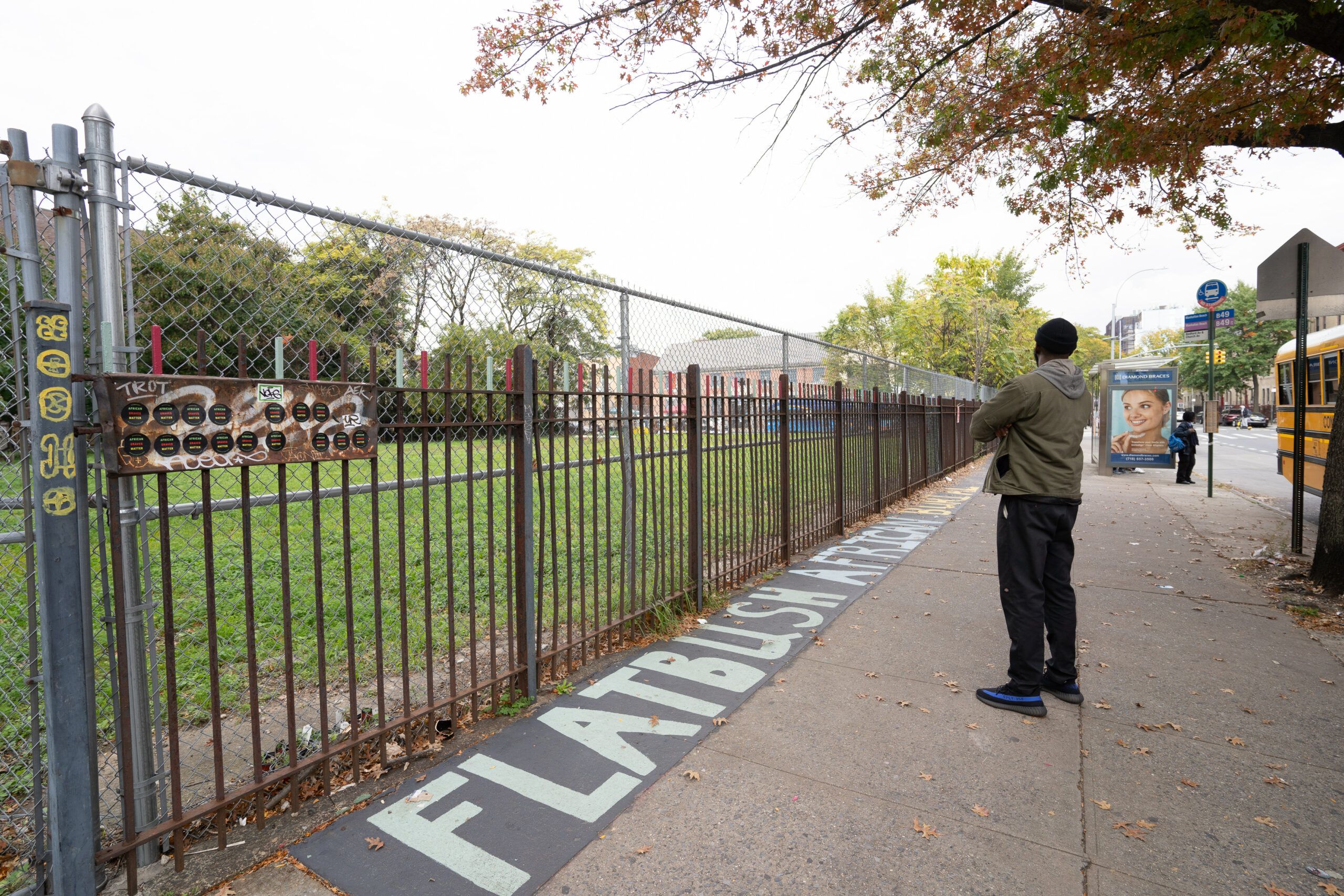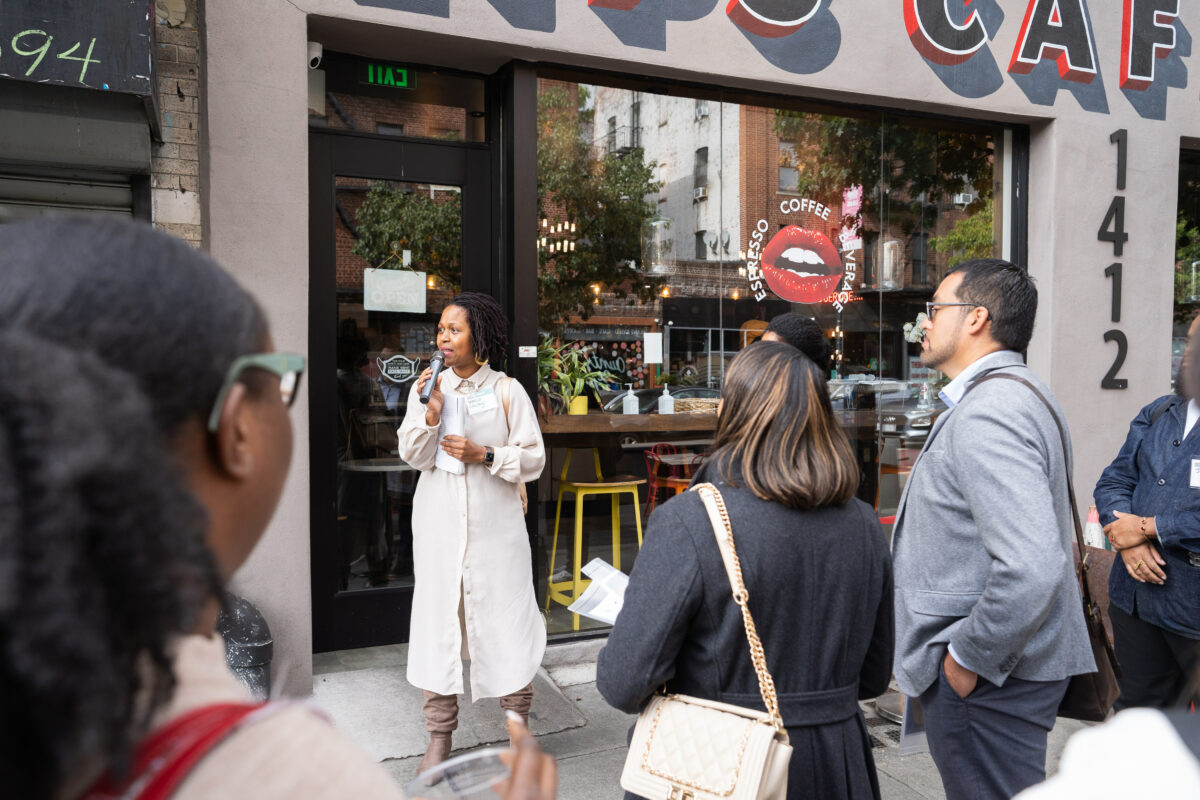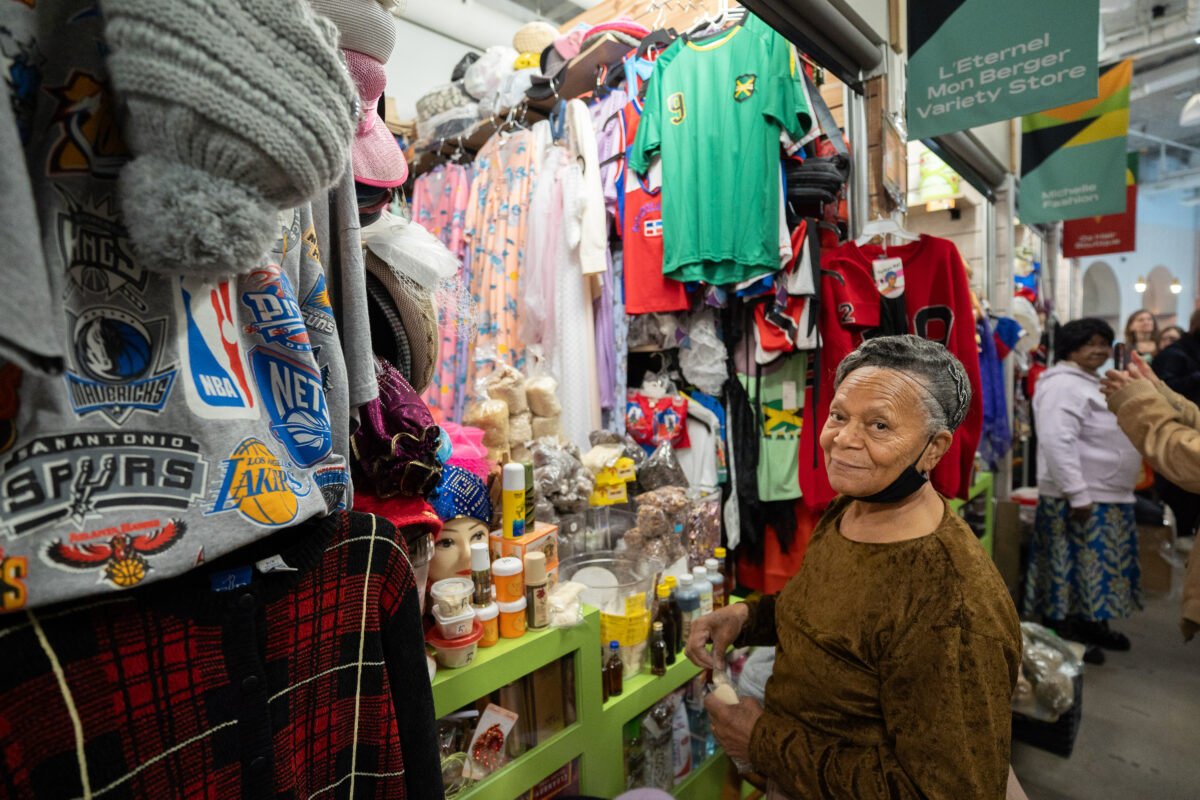
In Local Center Practice Notes, you’ll hear from teams and our own staff about what we’re learning as we support community-led design projects across New York City.
By Gina Lee
On a sunny Wednesday morning in October, a crowd of community development practitioners gathered outside of Flatbush Central, on the corner of Flatbush and Caton Avenues in Brooklyn. We were preparing to embark on a walking tour that would take us through the neighborhood and the history that surrounds the Flatbush African Burial Ground, where enslaved and free Africans were laid to rest from the 1600s to the 1800s. Led by Local Center partner GrowHouse NYC, the tour was a part of the Association for Neighborhood and Housing Development’s conference series, which focused on the theme of “Fight Forward,” emphasizing the importance of proactive, forward-looking community development rather than defensive, reactive interventions in top-down plans.
Throughout the tour, we learned about how the built environment of present day Flatbush is connected to the histories of settler colonialism and slavery and, most importantly, to the active resistance against those structures. The tour started inside of the Flatbush Central building, which opened in 2022 and gave a new home to the Flatbush Caton Market, a Caribbean vendor market with a 23-year history. We could sense the collectivity among the vendors in the market and their deep rootedness in the local community. Starting the tour in this historic market that recently received significant investment from the city, we saw the fruits of a community-led development process.

Taking off from Flatbush Central, the tour covered several blocks surrounding the Flatbush African Burial Ground. Shanna Sabio, co-founder of GrowHouse NYC, led the tour, asking us to envision walking into the past as we walked from location to location. She took us back to the 1400s and asked us to imagine being on a trail in an old-growth forest as we walked down Flatbush Avenue. She called on tour participants to read out from copies of historical documents, including first-hand accounts, that gave us insight into the lives of enslaved people in Flatbush. These elements of the tour helped us view the African Burial Ground not only as a piece of history and a mechanism for commemoration, but as an enlivened public space with the potential to connect past to future.
As we ended the tour at Lips Cafe, a cafe and community space owned by another mother-son entrepreneurial duo, I thought about the connections between locally-owned small businesses and a site like the Flatbush African Burial Ground. I thought about how the forces of gentrification and real estate speculation might put at risk not only these isolated sites, but also the cultural identity and social fabric they constitute and work to maintain. To combat the isolation and silos, GrowHouse is reaching across neighborhoods to connect Black communities to each other within Brooklyn and create a resilient network that strengthens collective Black staying power in Brooklyn. The collective in this part of Flatbush includes Lips Cafe, the Caton Market vendors, and all the stewards of the African Burial Ground, past and present.

At ANHD, we believe that thriving, equitable neighborhoods include affordable housing, local jobs, and small businesses, informed by the community living there. Through our partnership with the Urban Design Form, ANHD is supporting GrowHouse and other nonprofits and communities through a program we are calling: the Local Center. The Local Center is allowing ANHD to share and support the community development field with embracing the importance of public space in anchoring communities and movements working to fight forward.
For GrowHouse NYC, fighting forward means refusing to be complacent with what the city and elected officials offered them on the site of the Flatbush African Burial Ground and rather, really sparking the imagination and expanding the vision for the sacred space with local residents, community members, and people of African descent throughout the five boroughs. Across all Local Center projects, we see this deep rootedness from which our partners foster truly collaborative visions for their neighborhoods. The Local Center provides GrowHouse NYC and other partners with some additional tools to carry out that visioning process and bring it to life, but their connection to local history is what drives their mission and their work in the public realm.
Gina Lee is the Small Business Services Strategic Impact Grant Coordinator at the Association for Neighborhood & Housing Development (ANHD).